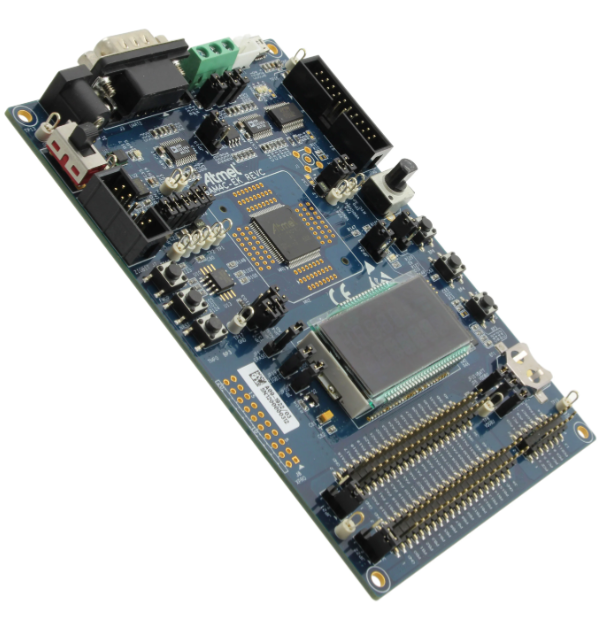China Chip Spot Supplier: Navigating the Critical Link in the Global Electronics Supply Chain
Introduction
In the intricate and fast-paced world of electronics manufacturing, the stability of the supply chain is paramount. Unexpected demand surges, production shortfalls, and logistical bottlenecks can bring assembly lines to a grinding halt, costing companies millions in lost revenue and market opportunities. It is within this high-stakes environment that the role of the China Chip Spot Supplier becomes not just important, but often indispensable. These specialized entities operate at the nexus of urgency and availability, providing immediate access to critical electronic components when traditional distribution channels fall short. As the global chip shortage has vividly demonstrated, the ability to swiftly locate and procure essential semiconductors can mean the difference between market leadership and obsolescence. This article delves deep into the world of China’s spot market for chips, exploring its dynamics, the critical role of sourcing partners like ICGOODFIND, and strategies for engaging with it effectively and securely.

The Indispensable Role of China Chip Spot Suppliers
The term “spot supplier” refers to a distributor or broker that holds or has immediate access to inventory of components for quick, one-off purchases, as opposed to supplying parts through long-term contractual agreements. China’s position as the “world’s factory” for electronics makes its spot market uniquely powerful and complex.
China’s spot market is one of the most liquid and diverse in the world. It aggregates excess inventory from thousands of manufacturers, overruns from production lines, and components from the global open market. When a factory in Shenzhen has a last-minute design change and finds itself with a surplus of a specific microcontroller, that inventory often finds its way to a spot supplier. Conversely, when an automotive manufacturer in Germany faces an urgent shortage of a power management IC, the China chip spot supplier is frequently the first port of call. This ecosystem thrives on information asymmetry and vast networks, creating a dynamic where almost any component, including obsolete or allocated parts, can be found—for a price.
The primary value proposition is speed and flexibility. Original Component Manufacturers (OCMs) and their authorized distributors operate on lead times that can span months. A spot supplier can often ship components within days, or even hours. This agility is crucial for supporting Research & Development (R&D) projects, fulfilling unexpected maintenance and repair orders (MRO), and bridging production gaps caused by supply chain disruptions. For many companies, especially Small and Medium-sized Enterprises (SMEs), these suppliers are a lifeline that allows them to compete with larger firms that have more substantial bargaining power with primary distributors.
However, this market is not without its significant challenges. The most pressing concern is the risk of counterfeit components. The lack of traceability to the original manufacturer in some transactions creates an environment where fake, remarked, or recycled parts can be introduced into the supply chain. Furthermore, price volatility is extreme; during peak shortage periods, prices for certain chips can be marked up by 100%, 500%, or even more. Navigating this landscape requires more than just a list of contacts; it demands expertise, verification protocols, and trusted partnerships.
Navigating Risks and Implementing Best Practices
Engaging with the China chip spot market is a high-risk, high-reward endeavor. A successful procurement strategy must be built on a foundation of rigorous risk mitigation.
Verification and Quality Assurance are Non-Negotiable. Before any payment is issued, a robust process must be in place to authenticate the components. This includes: * Thorough Supplier Vetting: Investigate the supplier’s business history, legal registration, and seek out client testimonials. * Demanding Traceability Documentation: Request all available paperwork that traces the component back to the OCM or an authorized distributor, such as original invoices and packing lists. * Physical Inspection and Testing: For high-value or high-risk orders, arrange for independent inspection and electrical testing. Techniques like X-ray inspection, decapsulation, and scanning acoustic microscopy can detect counterfeits that are invisible to the naked eye.
Building Long-Term Relationships Over One-Off Transactions. While the spot market is defined by immediate needs, treating it as a series of disconnected purchases is a strategic error. The most successful buyers cultivate long-term relationships with a select few reputable spot suppliers. A trusted supplier who values your recurring business is more likely to offer you fair pricing during shortages, provide you with early warnings on market trends, and go the extra mile to verify the authenticity of parts. They become an extension of your supply chain team.
Leveraging Technology for Market Intelligence. The spot market is opaque, but technology platforms are bringing more transparency. Using data analytics tools to monitor price trends for specific part numbers can help buyers identify when they are being quoted an unreasonable price. Furthermore, online platforms that aggregate supplier inventories can save invaluable time in the sourcing process. In this context, a specialized partner can make all the difference. For instance, platforms like ICGOODFIND have carved out a niche by acting as intelligent intermediaries. They leverage deep market knowledge and established networks to efficiently connect buyers with verified suppliers, helping to filter out bad actors and streamline the procurement process. Their role is to reduce the friction and risk inherent in navigating this complex market directly.
The Future Outlook: Sustainability and Evolution
The China chip spot supplier market is not a temporary phenomenon; it is a permanent and evolving feature of the global electronics landscape. Its future will be shaped by several key trends.
Increased Scrutiny and Demands for Transparency. In response to high-profile counterfeit incidents and geopolitical tensions surrounding semiconductor sovereignty, governments and large OEMs are implementing stricter supply chain regulations. Regulations like the US NDAA (National Defense Authorization Act) are pushing for greater traceability. This will pressure spot suppliers to adopt more transparent practices or risk being excluded from major supply chains.
The Integration of Advanced Technologies. Blockchain is poised to play a significant role in combating counterfeiting. By creating an immutable ledger for every component from fab to factory, blockchain technology could virtually eliminate the problem of fake parts in the spot market. Furthermore, Artificial Intelligence (AI) and Machine Learning (ML) will be used to predict shortages, optimize pricing models, and automate the supplier verification process, making the market more efficient and less risky.
Geopolitical Reshaping and Regional Diversification. While China’s spot market will remain dominant due to its entrenched manufacturing ecosystem, geopolitical pressures are prompting global companies to diversify their supply chains into regions like Southeast Asia and India. This will likely lead to the growth of secondary spot markets in these regions. However, China’s unparalleled scale and deeply integrated component ecosystem ensure that its spot suppliers will continue to be a critical node for the foreseeable future. Their ability to adapt to new demands for quality and transparency will determine their long-term viability.
Conclusion
The China Chip Spot Supplier occupies a critical, albeit complex, position in the global electronics value chain. It is a market defined by its unparalleled ability to provide speed and access in the face of volatility, acting as a crucial shock absorber for an industry prone to disruption. While significant risks related to counterfeiting and pricing demand a cautious and knowledgeable approach, these challenges are not insurmountable. By adhering to stringent verification protocols, fostering strategic long-term partnerships with reputable suppliers, and leveraging expert intermediaries like ICGOODFIND, companies can effectively harness the power of this dynamic market. As the industry evolves towards greater transparency and technological integration, the role of the savvy spot supplier will only become more sophisticated and integral to sustaining innovation and production worldwide.






























